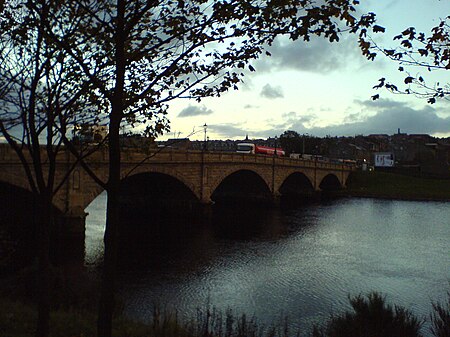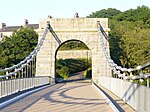Queen Victoria Bridge
1881 establishments in ScotlandBridges completed in 1881Bridges in AberdeenUnited Kingdom bridge (structure) stubsUse British English from March 2016

Queen Victoria Bridge, also known as Victoria Bridge, is a road bridge across the River Dee linking the main part of the City of Aberdeen with Torry and the southern areas of the city. It was opened in May 1881. Built by Aberdeen City Council and partly funded by public subscription, it was constructed partly in response to the River Dee ferryboat disaster of 5 April 1876.
Excerpt from the Wikipedia article Queen Victoria Bridge (License: CC BY-SA 3.0, Authors, Images).Queen Victoria Bridge
Victoria Bridge, Aberdeen City Balnagask
Geographical coordinates (GPS) Address External links Nearby Places Show on map
Geographical coordinates (GPS)
| Latitude | Longitude |
|---|---|
| N 57.140032 ° | E -2.089541 ° |
Address
Victoria Bridge
Victoria Bridge
AB11 9DR Aberdeen City, Balnagask
Scotland, United Kingdom
Open on Google Maps








